Musicarta Patreon Tier One
Greensleeves Lesson Two
Adding the Chords
In Greensleeves Lesson Two, you add basic chords to the melody to create your first proper performance.
Here is the Lesson Two performance video. It's a good idea to listen through a few times so you know what you're aiming at in the lesson.
Here is the all-in-one teaching video. You may find it more convenient to learn section by section, as below.
Below you'll find the same video split up into sections.
Naming the chord roots
Make sure you can name the keys on the piano we need to find the chords using this diagram and the video below.

Finding the chords from the chord symbols
Musicarta's Basic Music-making Position makes it easy to find chords from chord symbols.
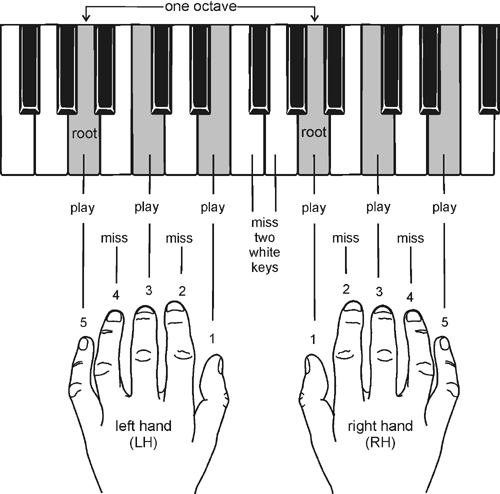
Here are the five BMP (Basic Music-making Position) chords you are going to find and use.
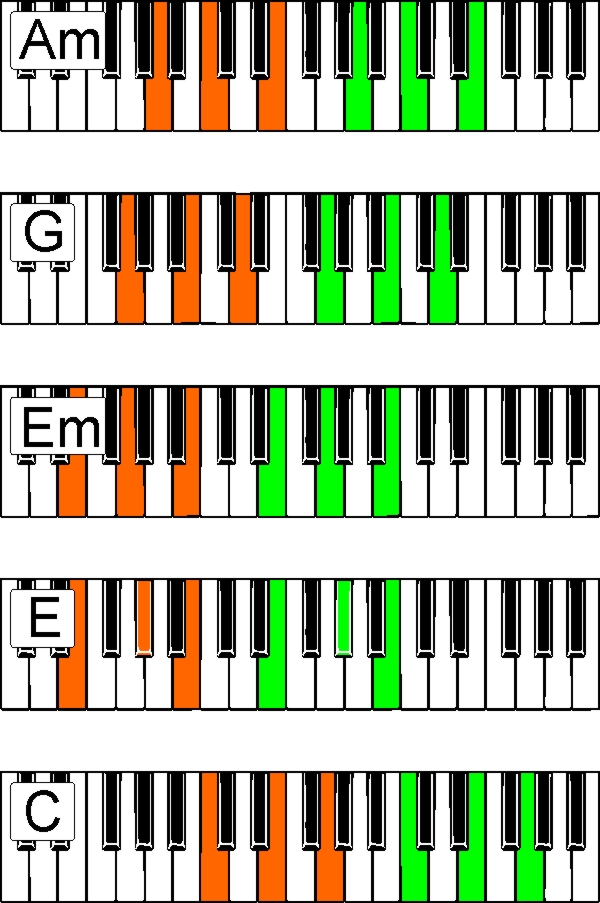
The first line of music
Here is the first line of music (first four bars), which you will play when you add the chords to the melody.

The second line of music
Only the last two bars are different from the first line.

Put the first two lines of music together to play the first half of the piece hands together.
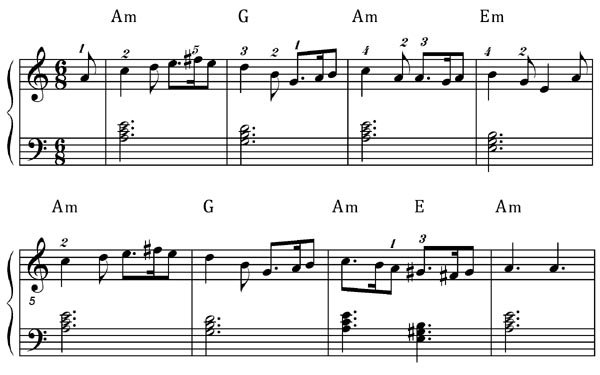
The second half of the piece
Here is the music for the second half of the piece.
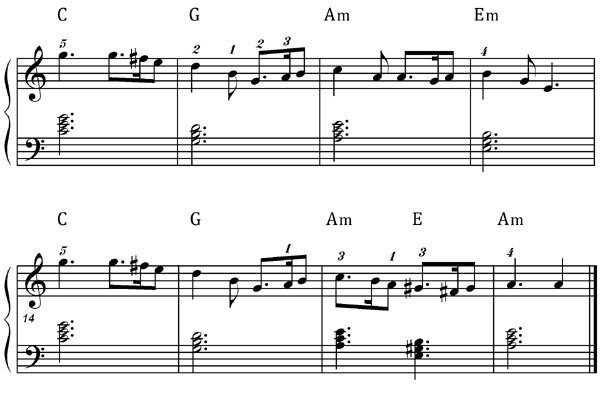
Here's the video walk-through.
The shape of the roots movement
Seeing chord progressions as shapes speeds up your learning by inviting other parts of your intelligence to help.
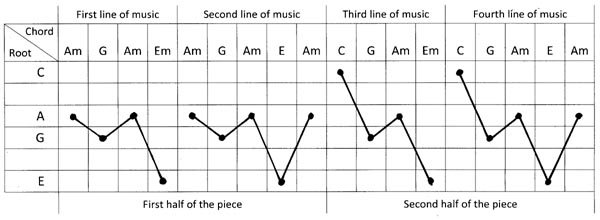
The Greensleeves First Performance
Now you can play the whole First Performance. Here's the music again, but try to play the performance from just what you know first.
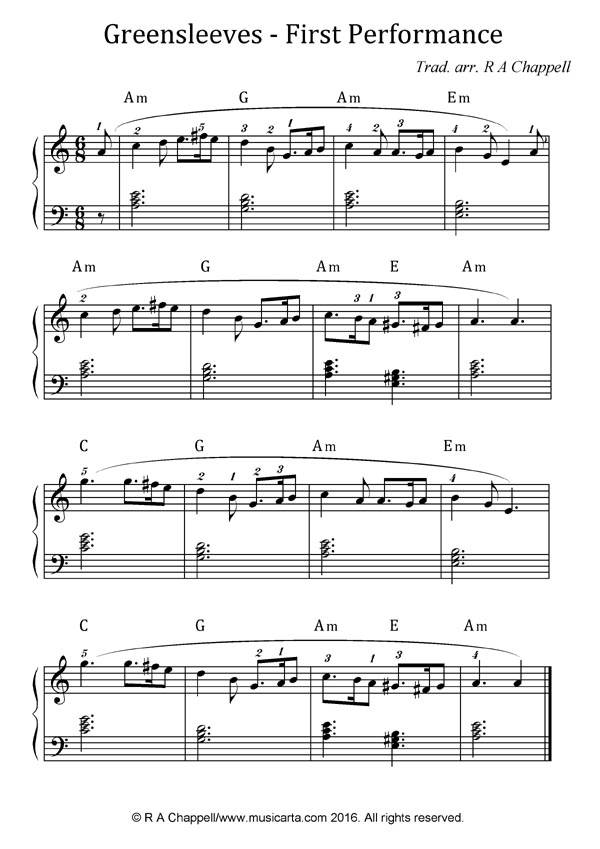
Here is a scrolling MS video of the performance.
A two-chords-per-bar version
As soon as you can find chords, you can make variations!
There's no music for this version - you play it straight out of your head.
'Rolling' the chords
Here's a simple trick to practice to make your performance sound even more interesting.
Outro
Your lesson goal is to play and record a hands-together version all the way through.
Consolidate your skills. Practice again tomorrow what you think you've learned today - some of it might have drifted off in the night. Speed-rehearse those chords! Revise the melody, right hand on its own. Look for any delays which indicate you're not 100% sure on the notes or the fingering and refresh your memory.
Try to enjoy your practicing. Be kind to yourself too: don't tut and scold yourself if you make a mistake. Grab hold of that mistake! Find out what it is, and why, then go back to that section and replace it with the correct version.
Don't you find it more empowering and interesting to play the piano from a knowledge
of how the music's 'put together', rather than just following the dots? This should be in your 'conditions of learning' - that learning should make you more able to create, rather than just reproduce.
Next up is broken chords in the left hand. It's really no exaggeration to say that if you can play broken chords in the left hand and a tune in the right, you can play the piano. So when you're ready, go on to Lesson Three.
Thanks for visiting MUSICARTA! Come again soon!
|
OUT NOW! |
THE MUSICARTA BEAT & RHYTHM WORKBOOK At last! An effective approach to keyboard rhythm & syncopation skills. Learn more! |
ONLY $24.95! |
GREENSLEEVES |
The MusicartaA methodical approach to keyboard syncopation for
|
PUBLICATIONS
exciting keyboard
creativity courses
CHORDS 101
WORKBOOK

~HANON~
video course

Musicarta
Patreon
PENTATONICS
WORKBOOK
video course

Creative Keyboard
video course

BEAT AND RHYTHM
WORKBOOK

- Volume 1 -

12-BAR PIANO
STYLES WORKBOOK

MUSICARTA MODES
WORKBOOK

PIANO STYLE

CANON PROJECT
video course

VARIATIONS
video course


- Piano Solo -
video course

- Piano Solo -


YouTube playlists





 THE LOGO
THE LOGO
